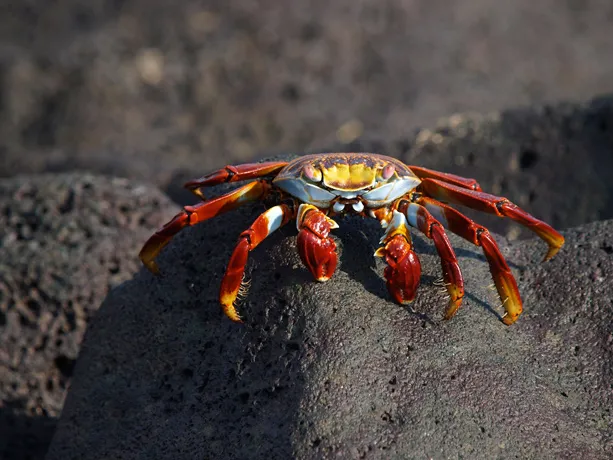Sally Lightfood Crab, Galápagos Islands, Ecuador

The Galápagos Islands site in Ecuador was inscribed on the World Heritage List in 1978. Located in the equatorial Pacific Ocean nearly 1000 km from South America, the Galapagos Islands and the surrounding marine reserve are a unique "living museum and showcase of evolution." Ongoing seismic and volcanic activity reflect the processes that formed the islands, which together with the extreme isolation, led to the development of unusual animals, such as the land iguana, giant tortoise, and the many types of finch – all of which inspired Charles Darwin's development of the theory of evolution by natural selection, following his visit in 1835. Pictured here is the Sally lightfoot crab, Grapsus grapsus.
Today, over 40 World Heritage sites are listed for their marine values. Together, they can be considered the "Crown Jewels of our Ocean" and are recognized for their outstanding beauty, exceptional biodiversity, or unique ecological, biological, or geological processes. Learn more about this and other marine World Heritage sites.

